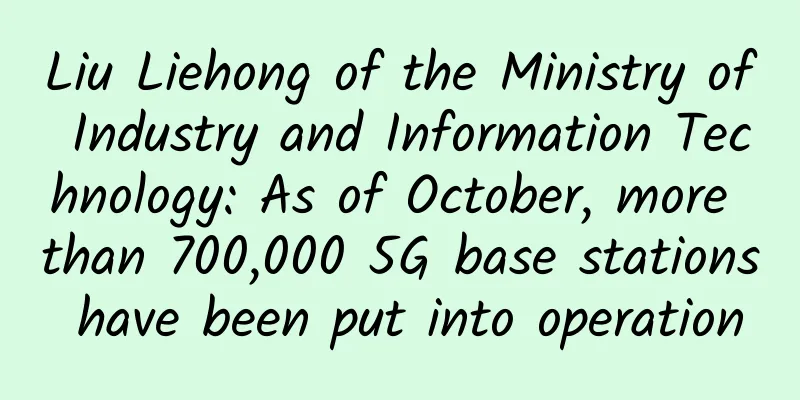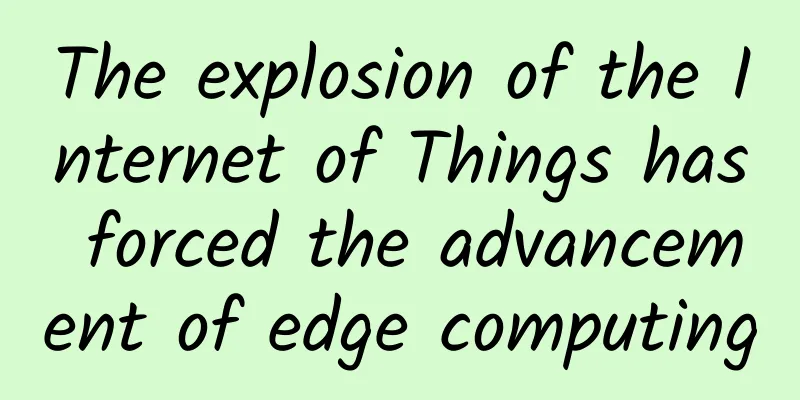See how valuable 5G spectrum is

|
Following the 5G Summit in September and the release of the "5GFAST" strategy, the United States officially launched the 5G spectrum auction on November 14 local time. "These spectrums are critical to the deployment of 5G services and applications, and we are not stopping there," said Ajit Pai, chairman of the Federal Communications Commission (FCC) on the same day. This year, countries have begun to allocate 5G spectrum, and the commercial use of 5G networks will be closer and closer to us. The battle for spectrum 3GPP defines the three major application scenarios of 5G as eMBB, mMTC and URLLC. Among them, eMBB corresponds to enhanced mobile broadband such as 3D/ultra-high-definition video, which is also the familiar mobile Internet of Things scenario; mMTC and URLLC both belong to mobile Internet scenarios, among which mMTC corresponds to large-scale machine-type communications, while URLLC corresponds to services such as unmanned driving and industrial automation that require low-latency and high-reliability connections. In order to more effectively support the three major application scenarios, 5G spectrum needs to be planned from the low, medium and high frequency bands. Spectrum planning is the starting point for the development of the communications industry and has an important impact on the final structure of the industry. The US FCC will first auction high-frequency 5G spectrum, starting with the 28GHz band, and then the 24GHz band. These two auctions will provide a total of 1.55GHz of spectrum. After the auction of these spectrums, the United States will auction three other millimeter wave bands in 2019: 37GHz, 39GHz and 47GHz. According to the FCC website, as of November 20, 28GHz has been auctioned for 14 rounds, with a total bid amount of $145 million. Bidders have bid for 2,367 licenses, and there are still 705 licenses left to bid. Regarding the spectrum auction, FCC Commissioner Brendan Carr said, "5G is about our economic leadership for the next decade. The high-frequency spectrum auctioned this time will be critical to the development of 5G and the innovations brought by the next generation of wireless technology, including faster broadband speeds to self-driving cars, from smart remote controls to telemedicine and the Internet of Things." 4G changes life, 5G changes society. Compared with 4G networks, the development of 5G has achieved the stage of expansion from mobile Internet to Internet of Things. For mobile communications, spectrum resources are the core resources to promote industrial development. The spectrum demand of 5G will far exceed that of 2G, 3G, and 4G. Ajit Pai pointed out that in the next 15 months, the FCC will release nearly 5GHz spectrum to the market, which is more than the total of all spectrum currently used by mobile operators. The importance of 5G is clear to all countries. Recently, the German government will allocate the entire C-band (3.4GHz-3.8GHz) for 5G deployment. Mats Granryd, president of GSMA, said, "The C-band is the most important band for 5G. By releasing this crucial band in a timely manner, Germany is demonstrating its leadership in 5G." With the freezing of 5G core standards, the construction of global 5G networks is in a state of fierce competition. Many countries in Asia and Europe have completed spectrum auctions. For example, in June this year, the Ministry of Science and Technology of South Korea announced the completion of the 5G spectrum auction, becoming the first country in the world to complete the auction of 3.5GHz and 28GHz spectrum at the same time. In this spectrum auction in South Korea, the total auction revenue was 3.62 trillion won. The transaction volume of Italy's 5G spectrum auction reached 6.5 billion euros (about 52 billion yuan), 4 billion euros higher than the initial reserve price. In China, in August this year, Wang Zhiqin, vice president of the China Academy of Information and Communications Technology, said that my country will release the final licensing plan for 5G spectrum resources in September this year, but the plan circulating on the Internet has not been officially recognized so far; in November, Wu Hequan, an academician of the Chinese Academy of Engineering, said at the World Internet Conference that my country's 5G licenses will be issued as early as the end of this year. my country will start 5G pre-commercial use in 2019 and officially commercialize 5G in 2020. China is in the first tier Earlier, Ernst & Young's report "China Sets Sail to Lead the World in 5G" predicted that China is taking the lead in the development of 5G and is likely to become one of the first major markets in the world to deploy 5G. Ernst & Young predicts that China's 5G capital expenditure will reach 1.5 trillion yuan between 2019 and 2025. Chen Shengde, a partner of Ernst & Young Greater China Consulting Services, told the First Financial reporter that China, the United States, Japan and South Korea are all in the first echelon in the 5G race. He pointed out that in terms of 5G standard setting, China and the United States are relatively ahead, "because China has the foundation of 3G and 4G. In the past, we spent a lot of money and introduced a lot of funds to participate in 5G standards at a very early stage, while the United States has a lot of accumulation." In terms of applications, Japan and South Korea are also in the first echelon. At the Winter Olympics in Pyeongchang, South Korea, 5G made its global debut, providing immersive 5G experience services such as simultaneous viewing, interactive time slicing, and 360-degree VR live broadcasts. It also accelerated the progress of 5G commercialization in all links of the industry chain and unveiled the curtain of 5G commercialization. Japan also hopes to make better use of 5G with the help of the 2020 Olympics. In September, US President Trump convened executives from the top four US mobile communication network operators AT&T, Verizon, T-Mobile, and Sprint, FCC Chairman Ajit Pai, as well as lawmakers and President Trump's advisers to discuss how to encourage private sector investment in 5G. At the same time, the United States also released the "5GFAST" strategy, which mainly includes three major contents, namely allocating more spectrum resources to 5G, updating infrastructure policies for 5G commercial deployment, and updating outdated regulations. In addition, last month, US President Trump also signed a presidential memorandum requiring the Department of Commerce to develop a long-term, comprehensive national spectrum strategy to prepare for 5G. The 5G business model is not yet clear, and how to recover the cost of 4G network construction is still a problem, but in the 5G competition, the world's major operators all hope to complete the deployment of 5G networks first and gain the first-mover advantage. |
<<: NFV is stumbling forward and entering the second half
>>: AI brings innovative value, Huawei says it is time for AI to enter data center infrastructure
Recommend
DediPath has a 25% discount on the first month, VPS starts at $0.87 for the first month, multiple data centers in Los Angeles/New York, etc.
DediPath has launched a 25% discount promotion fo...
How does Netty solve the half-packet and sticky-packet problems?
Netty is a high-performance, asynchronous event-d...
What exactly is a socket? Do you want to know?
I believe that everyone was like me when they fir...
Quick Start with Linkerd v2 Service Mesh
In this guide, we'll walk you through how to ...
Smart cities around the world: six innovative success stories
[[406966]] It is estimated that at least 180,000 ...
Transforming the Enterprise with 5G Technology
For years, people have been talking about the tra...
ByteHosting: €3.99/month KVM-4GB/30GB/1TB/Frankfurt, Germany
ByteHosting is a foreign hosting company establis...
Maxthon Hosting: Hong Kong CN2 line 2G memory VPS 20% off 56 yuan/month, optional native IP, optional high defense, support IP change
Maxthon Host is a long-established foreign hostin...
Tencent Cloud Flash Sale: Cloud Server from 74 yuan/year, 1C2G6M for three years from only 219 yuan
Competition among domestic cloud server vendors i...
5G spectrum competition is "fighting" and deployment is surging
Recently, T-Mobile urged the FCC to complete the ...
Learn about HTTP proxy in five minutes
[[429696]] "If you have any questions or dis...
As the wave of 5G security approaches, how can we play the 5G security card well?
From 2G to 4G, mobile networks have become an ind...
The bitterness and helplessness of the three major operators due to repeated delays in 5G packages
In June, the three major operators who obtained 5...
zgovps: US/Japan/Netherlands/Germany VPS with annual payment starting from $12.9, optional CN2 GIA/AS9929/CMIN2 lines
zgovps is a Chinese hosting company established i...









